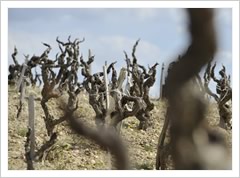This website uses cookies to improve user experience. By using our website you consent to these cookies being used in accordance with our cookie policy.
Register
Log in
Welcome to Kerry Wines!
Lying on the river banks of the Rhône, the vineyards of Rhône Valley fall into two main parts: The North and the South, each with its distinctive climates, soil and grape varieties.
Stretching from Vienne to Valence, the Northern Rhône is home to many highly reputed wines, though it accounts for only 5% of the total production of the Rhône Valley. Syrah is the only black varietal grown on the granite soil in this region. With the cooling effects of the mistral (a cold dry wind that comes from northern France, which accelerates when it passes through the valleys of the Rhone) and the latitude, northern Rhône provides a climate which is at the limit of where Syrah can be grown, producing ink-black reds that, at their best, combine power and elegance, as well as peppery and savoury character with great longevity. Prestigious appellations such as Hermitage and Côte Rotie produce world-class reds that rival the crus classé of Bordeaux.
Côte Rotie, the most northerly appellation, literally means ‘roasted slope’. The vines are grown on steep slopes that allow maximum exposure for the grapes. The reds are made from Syrah but can be blended with up to 20% Viognier, even if most of the time only a small percentage is added. Located on the narrow and steep terraces, the vines must be tended by hand. The best Côte Rotie can be full bodied, spicy, with floral aroma and textual elegance.
Hermitage red is the fullest-bodied and longest-lived amongst all northern Rhône reds. Firm and minerally, the best reds are seamlessly elegant. It is also producing white wines made from Rousanne and Marsanne.
Cornas is considered one of the most undervalued wine of the northern Rhône reds. Located in the most southerly and the warmest area, its sun-trap vineyards produce the darkest and most robust reds.
In general a lighter version of Hermitage or Côte Rotie, Saint-Joseph is increasingly producing good quality wines of great value. The best wines are coming from the terraced vineyards near Tournon.
Essentially a red wine region, the northern Rhône also produces world-class whites from Viognier. Condrieu and Château-Grillet are white wine appellations made solely from this increasingly popular grape. Its seductive aroma, finesse and minerality are unmatched by other regions.

Heading south of Valence, the Rhône valley flattens out as the river flows through Avignon and gets closer to the sea. The southern Rhône covers a wide area and accounts for 95% of the total wine production of the entire Rhône, with the vast majority coming from the generic appellations such as Côte du Rhône. Renowned for its high quality reds, this region also produces white and rosé as well as offering a wide range of wines at different price points, from good value everyday drinking wine to fine wine. The region has a Mediterranean climate with warm summers and cold winters, and without the protection of slopes that are present in the northern Rhône, it is affected by the Mistral.
Châteauneuf-du-Pape is the first appellation ever declared in France. Although up to 13 grape varieties are allowed for the blending of the red, Grenache is the dominant grape with Syrah and Mourvèdre playing the supporting role. The appellation is famous for its stony soil covered by “galets”, or pudding stones, which store heat during day time and release it at night.
Similar in style to Châteauneuf-du-Pape, Gigondas produces some of the most underrated wines in the region. Whereas Vacqueyras tends to have more Syrah and Mourvèdre in the blending, producing darker coloured and more tannic wines.
Tavel is one of the most famous rosé from the region, made mainly from Grenache and Cinsault. The wines are usually full bodied with intense flavours.